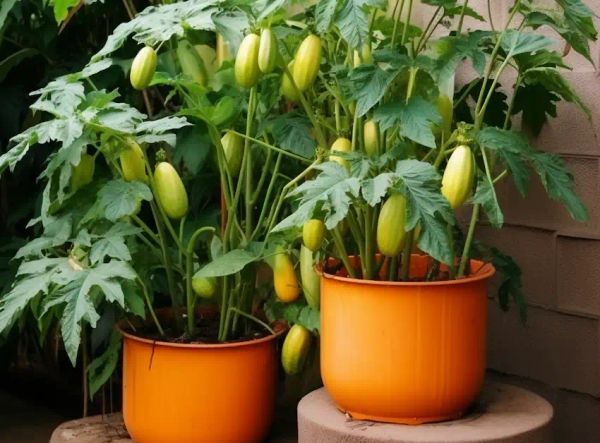
Papaya, a delicious and nutritious tropical fruit, is a favorite among many gardeners. While it is usually grown in warm regions, you can successfully cultivate papaya at home, even in cooler climates, by planting them in pots. In this comprehensive guide, we will reveal the secrets to achieving a bountiful papaya harvest right in your own backyard.
1. Choosing the Perfect Papaya Seeds
The journey to a thriving papaya harvest begins with selecting high-quality seeds. Here are some simple steps to help you obtain the best seeds:
Opt for Ripe Papaya: Choose a fully ripe papaya with mature and viable seeds.
Seed Extraction: Cut the papaya in half and scoop out the seeds. Rinse them to remove any pulp and let them air dry for a day or two.
2. Germinating Papaya Seeds
Germination is a crucial step in ensuring successful papaya growth. Follow these steps to prepare your seeds:
The Moist Paper Towel Method: Place the seeds evenly on a damp (but not soaking wet) paper towel. Fold it over and put it inside a plastic ziplock bag.
Provide Optimal Warmth: Papaya seeds require warmth to germinate. Keep the ziplock bag in a warm area, ideally maintaining a temperature between 75-85°F (24-29°C) with indirect sunlight.
Monitor Germination: After 1-2 weeks, check the paper towel for sprouted seeds with small roots. These seeds are now ready for planting.
3. Planting Papaya in Pots

Now that your seeds have germinated, it is time to plant them in pots. Follow these steps for successful container gardening:
Select a Suitable Pot: Choose a large pot with excellent drainage. A 10-15 gallon pot should be sufficient.
Prepare the Soil: Use well-draining potting mix with a pH of around 6.0-6.5. Add organic matter like compost to enhance soil fertility.
Transplant the Seedlings: Gently transplant your germinated papaya seedlings into the prepared pots. Ensure that the top of the root ball is level with the soil’s surface.
Spacing: If you plan on growing multiple papaya plants, space them at least 10 feet apart to accommodate their mature size.
4. Caring for Your Papaya Plant
To nurture a thriving papaya plant, consider the following care tips:
Sunlight: Papayas need ample sunlight, at least 6 hours of direct sunlight each day.
Watering: Keep the soil consistently moist, avoiding waterlogged conditions. Water deeply when the top inch of soil feels dry.
Fertilization: Papayas are heavy feeders. Use a balanced fertilizer or one designed for fruit trees every 2-4 weeks during the growing season.
Pruning: Regularly trim dead or damaged leaves and excess growth to encourage a well-structured tree.
Pest and Disease Control: Keep a watchful eye for common papaya pests like aphids, mealybugs, and fruit flies. Use organic pesticides when necessary.
Support: As the plant grows, provide support to prevent it from toppling due to the weight of the fruit.
5. Harvesting Your Papayas
After 6-9 months, your papaya plant should yield fruit. Harvest the papayas when they reach their desired ripeness, typically when they turn yellow or orange, depending on the variety. Gently twist the fruit from the stem, and it should come off easily.

Growing papaya at home in pots is a rewarding endeavor. With proper care and attention, you can enjoy delicious, homegrown papayas regardless of the size of your garden. Remember that papaya plants have a relatively short lifespan, typically 4-6 years. So be prepared to restart the process once your plant reaches the end of its productive years. Happy gardening!



